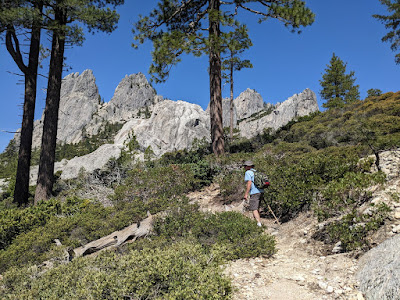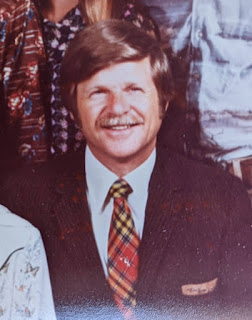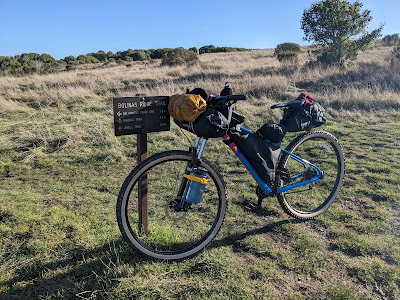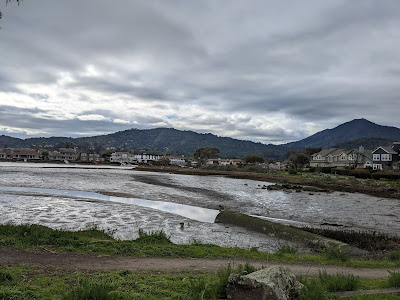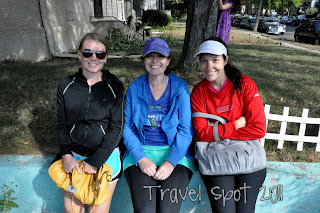Happy Memorial Day! This weekend kicks off the "official" backpacking season for me each year, so I thought I would finally post about the two week trip that I took to Oh Canada to hike the Great Divide Trail (GDT)! Hopefully you are off enjoying the extra day off of work and the sunshine today (and are reading this post on Tuesday)!
 |
| Healy Pass - Banff NP |
Canada's Great Divide Trail is a 1,123 km (702 mile) trail that follows the Great Divide between Kawka Provincial Park in the North to Waterton Lakes National Park in the south. If you are a Continental Divide Trail (CDT) hiker in the US, you can actually just keep going north if you wanted, following the GTD the rest of the way up to Kawka PP. It flip flops between Alberta and British Columbia and goes through several different national and provincial parks and wilderness areas.
It is made up of several trails linked together and some are very well maintained (Banff Mountain National Park), some of them are washed out and some of them are nearly non-existent and require route-finding (Don Getty Wildland Provincial Park). Some of the trail goes through places with more access to roads and/or people (Banff, Jasper etc.) bus some places are downright remote. In fact, if you are a NOBO hiker, when you arrive to Kawka, you have to hike out about 75 km (47 mi) on a forest service road to get back to a highway. You can find information about this and a lot more on the GTD website.
The Route: I had been hiking in Yolo, Kootenay, Jasper and Banff before and had found the scenery stunning, so in 2018, I decided that I wanted to see more. However, I was not going to be able to cover it all in a two week vacation. I really wanted to see the four parks I mentioned again, but logistically, I felt it was easier to either pick a more southern section, therefore skipping Jasper, or pick a more northern one, therefore missing some of the Provincial Parks I had not been to.
I decided to do a NOBO section hike of sections B, C and D which would be a 500 km (312 mi) stretch starting in Coleman and ending in Saskatchewan River Crossing. This would mean hiking about 25 miles per day. If needed, I could skip section C and bail out one road crossing before that at Field, which would be 385 km (247 mi) stretch and about 20 miles per day. I would start in Coleman since I could easily get a bus from Calgary, and hope that at the end I would not have to wait around for two days for a bus back.
I used Gaia to map out my estimated miles per day and then exported the routes to the Offline Maps app. I also bought the GDT app for my phone so I would have a couple of different options for navigation. I won't lie, I did not figure out until two thirds through my trip that it's interactive and people could make notes in the app, which would have been helpful at the beginning, which was more rugged and had more route-finding.
The Plan/Logistics: To hike the trail, you need to buy a Parks Canada National Pass, which covers entry into all the parks. I bought mine in advance and had it sent to my house. Camping is a little confusing as there are several different organizations and parks you have to deal with regarding passes and permits. You may need to book campsites in advance for many of the national parks and some provincial parks; this pdf list of all of the sites and whether or not they need to be booked was very helpful. When I went, they were not all online, but it looks like more are now; you can find the online booking tool here.
I got a flight to Calgary from San Francisco, which after spending nearly 24 hours traveling to my mountain destinations in Europe, felt so short and easy! From Calgary, I took a Greyhound bus to Coleman. There was only one bus per day and it left Calgary around 10:00 pm, arriving in Coleman around 4:00 am. I flew in around 10:00 am, which left me with some time to kill, but I spent it having my last hamburger and beer, and buying fuel and bear spray since I could not fly with either of those.
A quick note about Canadians and bear spray: I had to purchase bear spray and register it, as it could technically be used as a weapon. I was told that there was a serial number on the can and if I left it at a random trailhead and someone used it as a weapon, I would be liable. Wow. I am not sure what they expect foreigners to do with their (hopefully) unused bear spray. (Note: apparently you can rent it in Banff, but I did not find a place to do so in Calgary). After eating and shopping, I killed time reading and charging my electronics at a coffee shop before boarding my bus to Coleman.
I arrived at Coleman around 4:00 am and was dropped off at the 7-11 in the dark on the side of the highway. I then had to walk a couple of miles on the highway to get to the trail. It was a bit of an odd start; I was very happy when I veered off the highway and onto the trail, although then you walk on ATV roads for the next maybe 20 or 30 miles, so it was not exactly what I had expected.
Once I had finished, I took a series of local busses and the Greyhound back to Calgary. The bus system in Canada was just okay; it definitely was not as good as the transport in Europe, and is probably more on par with some of the options in the US. For example, both the bus to Coleman and the one back to Calgary were just once a day and they were at very strange times. Also, as it is in the US, there were some interesting characters riding the bus, whereas in Europe everyone rides the bus, not just the people who do not have a car.
The Big Three: I took my Big Agnes Fishhook UL1 Tent (one man - 47 oz.) on this trip. I used the Hyperlite 2400 Southwest Backpack (28.6 oz.) and Western Mountaineering Ultralite 20 degree sleeping bag (29 oz.). For my sleeping pad I had the Therm-a-Rest NeoAir Xlite short size (8 oz.) that had popped on my Kungsleden trip. I patched it up with the kit that comes with it, but it still slowly deflated throughout the night, so I was constantly blowing it up. My big three weighed about 7 pounds.
Base Pack Weight: My base pack weight was about 18 pounds, excluding clothing worn and including an extra dry and clean outfit for after the trail. You can see my LighterPack list for this trip here.
Clothing: For weather, this trip ran the gamut. I experienced the following: baking in the sun, below freezing temperatures, snow and rain. I brought my normal list of layers: REI button down shirt, short sleeved shirt, Mountain Hardware ghost whisperer puffy jacket, Montbell rain jacket & REI rain pants. I also brought a buff, a windbreaker, gloves, beanie and tights just in case, and I used them all! I don't want to have a spoiler alert for my trip report, but after this trip, I did a lot of research about snow camping and waterproof gear.
Food: After my Kungsleden trip, I decided that when I am hiking long days, I prefer to have a hot meal in the morning and am fine with a cold one in the evening. This saves on gas and time. However, I do love a warm cup of coffee, especially when it's cold. My plan was to have coffee and dinner for breakfast, which consisted of beans and rice, ramen and a couscous medley. For dinner, I would have cold muesli with fruit and powdered milk. This also allowed me to eat dinner easily on the go as well as not eating in my camp at night due to the presence of bears.
I carried all of my food in two drybags, which I hung each night. However, this is more easily said than done, as some forests were made of only pine trees which did not have limbs long enough or high enough to hang a bag from. There were some nights that I had to hang the food as high as I could in two separate spots 100 feet away from my camp and pray for the best.
Water: This was the bane of my existence. I carried the Sawyer mini and the 1 liter squeeze bag that comes with it as well as a one liter clean water container. Finding water was no issue at all, and I did not really need to carry more than a liter or so at a time most of the time. However, I popped the squeeze bag somewhere around day 4 or 5 and duct taped it up, but it required a bit of jerry rigging to make it work. Aside from that, filtering is my least favorite thing to do and I felt that I was constantly filtering on this trip. Spoiler alert, I have since fixed this problem with two magical items, the CNOC squeeze bag and gravity filtering!
Total Pack Weight: Including two liters of water, about 20 pounds (13 days worth) of food, a medium fuel container and bear spray, my pack weighed about 40 pounds. Let me tell you, I was happy to eat my way toward a lighter pack on this trip!
The Verdict: As I mentioned above, after this trip I dialed in my water filtration system a lot, which has made me a much happier camper. I also invested in some wet/cold weather items, as I got pretty wet and cold in good ol' Canada. Other than that, I was very happy with my set up. I definitely want to go back and hike more sections of this trail and maybe even revisit a few places, such as Mt. Assiniboine, which was very foggy on the day that I was there. I would say that my pack is quickly becoming my favorite piece of gear as it is lightweight, comfortable and mostly waterproof!
More Information: GDT website.
If you have any questions, let me know! Otherwise, happy hiking!
Have you ever been to Canada? Have you ever ridden the Greyhound (or other long distance transport) in the US or Canada (and what did you think)? What did you do for the long weekend this weekend?














